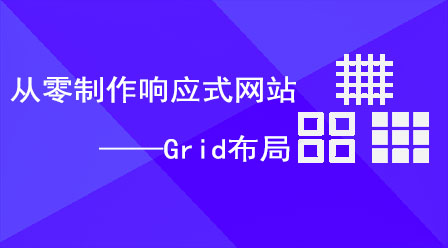Golang反射解析结构体方法全解析
时间:2025-07-29 21:45:29 291浏览 收藏
一分耕耘,一分收获!既然打开了这篇文章《Golang反射解析结构体方法详解》,就坚持看下去吧!文中内容包含等等知识点...希望你能在阅读本文后,能真真实实学到知识或者帮你解决心中的疑惑,也欢迎大佬或者新人朋友们多留言评论,多给建议!谢谢!
反射在Golang中通过reflect包实现结构体的类型获取、字段遍历、值修改及标签读取。1. 获取结构体类型信息时,使用reflect.TypeOf()并判断Kind()是否为Struct,若为指针需调用Elem()获取实际类型。2. 遍历字段使用ValueOf()配合NumField()和Field()逐个访问,并通过Interface()还原值,仅限导出字段。3. 修改字段前必须确保可寻址且字段可设置(CanSet()),并保持类型一致。4. 通过FieldByName()查找字段并读取Tag信息,用于元数据解析或构建ORM等通用工具。反射操作需注意字段可见性、类型匹配及指针处理等问题。

反射在Golang中处理结构体时,主要依赖reflect包提供的功能。通过反射,可以动态获取结构体的类型信息、字段信息以及操作其值。以下是Golang反射操作结构体的关键方式和技巧:

获取结构体类型信息
在反射中,可以通过reflect.TypeOf()函数获取一个变量的类型信息。对于结构体而言,通常需要先判断其是否为结构体类型。

type User struct {
Name string
Age int
}
user := User{}
t := reflect.TypeOf(user)
if t.Kind() == reflect.Struct {
fmt.Println("这是一个结构体")
}建议:
- 如果传入的是指针类型(例如
*User),要使用t.Elem()获取实际结构体类型。 - 注意区分值类型和指针类型,避免误判类型种类(
Kind())。
遍历结构体字段并读取字段值
反射允许遍历结构体的所有字段,并访问每个字段的名称、类型和值。

v := reflect.ValueOf(user)
for i := 0; i < v.NumField(); i++ {
field := v.Type().Field(i)
value := v.Field(i)
fmt.Printf("字段名:%s, 类型:%s, 值:%v\n", field.Name, field.Type, value.Interface())
}说明:
NumField()返回结构体字段的数量。- 使用
Field(i)获取字段的Value对象,再调用Interface()还原为原始值。 - 字段必须是导出字段(首字母大写),否则无法访问。
常见问题:
- 如果传入的是结构体指针,需要用
v.Elem()获取结构体本身。 - 对于嵌套结构体字段,可能需要递归处理。
修改结构体字段值
如果想通过反射修改结构体字段的值,需要注意以下几点:
- 必须传入可寻址的结构体(例如使用
reflect.ValueOf(&user).Elem())。 - 只能修改导出字段(首字母大写)。
user := User{}
v := reflect.ValueOf(&user).Elem()
nameField := v.Type().Field(0) // 假设第一个字段是Name
nameValue := v.FieldByName(nameField.Name)
if nameValue.CanSet() {
nameValue.SetString("Tom")
}关键点:
- 确保字段支持赋值(
CanSet())。 - 设置值时,类型必须匹配(例如不能将字符串赋给整型字段)。
- 结构体字段标签(tag)也可以通过反射读取,常用于JSON或数据库映射场景。
判断字段是否存在及获取字段标签
反射还支持通过字段名查找字段,并获取字段的标签信息。
field, ok := v.Type().FieldByName("Name")
if ok {
fmt.Println("字段标签:", field.Tag)
}用途:
- 解析结构体字段的元数据(如
json:"name")。 - 构建通用的数据绑定工具(比如ORM框架或配置解析器)。
注意事项:
- 标签信息是字符串形式,需要手动解析(如使用
reflect.StructTag.Get("json"))。 - 不同库可能使用不同的标签规则,需注意格式统一。
基本上就这些。反射操作结构体虽然强大,但容易出错,比如字段不可设置、类型不匹配等,使用时要特别小心。
今天关于《Golang反射解析结构体方法全解析》的内容就介绍到这里了,是不是学起来一目了然!想要了解更多关于的内容请关注golang学习网公众号!
-
505 收藏
-
502 收藏
-
502 收藏
-
502 收藏
-
502 收藏
-
116 收藏
-
238 收藏
-
443 收藏
-
482 收藏
-
333 收藏
-
179 收藏
-
140 收藏
-
344 收藏
-
164 收藏
-
129 收藏
-
484 收藏
-
314 收藏
-

- 前端进阶之JavaScript设计模式
- 设计模式是开发人员在软件开发过程中面临一般问题时的解决方案,代表了最佳的实践。本课程的主打内容包括JS常见设计模式以及具体应用场景,打造一站式知识长龙服务,适合有JS基础的同学学习。
- 立即学习 543次学习
-

- GO语言核心编程课程
- 本课程采用真实案例,全面具体可落地,从理论到实践,一步一步将GO核心编程技术、编程思想、底层实现融会贯通,使学习者贴近时代脉搏,做IT互联网时代的弄潮儿。
- 立即学习 514次学习
-

- 简单聊聊mysql8与网络通信
- 如有问题加微信:Le-studyg;在课程中,我们将首先介绍MySQL8的新特性,包括性能优化、安全增强、新数据类型等,帮助学生快速熟悉MySQL8的最新功能。接着,我们将深入解析MySQL的网络通信机制,包括协议、连接管理、数据传输等,让
- 立即学习 499次学习
-

- JavaScript正则表达式基础与实战
- 在任何一门编程语言中,正则表达式,都是一项重要的知识,它提供了高效的字符串匹配与捕获机制,可以极大的简化程序设计。
- 立即学习 487次学习
-

- 从零制作响应式网站—Grid布局
- 本系列教程将展示从零制作一个假想的网络科技公司官网,分为导航,轮播,关于我们,成功案例,服务流程,团队介绍,数据部分,公司动态,底部信息等内容区块。网站整体采用CSSGrid布局,支持响应式,有流畅过渡和展现动画。
- 立即学习 484次学习
